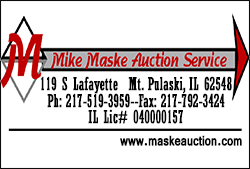|
U of I Extension
Unwanted guests: Invasive insect pests
 Send a link to a friend
Send a link to a friend
[September 03, 2019]
With the end of summer approaching, homeowners may
start noticing some unwanted house guests. There are a number of
pests that will be looking to invade homes during the cooler months,
according to University of Illinois Extension horticulture educator
Andrew Holsinger. The most common are multicolored Asian lady
beetles, boxelder bugs, and brown marmorated stink bugs. |
|
 The south and west sides of the home are more
popular locations for these insects to congregate. As the weather
outside cools, the warmth of the home makes it an attractive spot
for these insects. They can enter in large numbers and reside in the
cavities of walls, attic spaces, and even to the depths of a
basement. The south and west sides of the home are more
popular locations for these insects to congregate. As the weather
outside cools, the warmth of the home makes it an attractive spot
for these insects. They can enter in large numbers and reside in the
cavities of walls, attic spaces, and even to the depths of a
basement.
“Prevent beetles and other insects from entering the home by
caulking or sealing cracks and crevices,” Holsinger says. “Insects
often find areas like these in nature to overwinter and will use
your home as a substitute.”
Holsinger shares that you can seal obvious cracks and openings, but
you still may encounter some of these insects intruding in your
space. However, these insects are not harmful in terms of spreading
human disease.

“The insects that find their way into your home in the fall are
mostly just a nuisance,” he explains. “They can be problematic for
certain individuals who can have an allergic reaction or asthma
triggered by their presence.”
Multicolored Asian lady beetles
The Asian lady beetles are oval or convex in shape and yellow to red
in color. The number of spots on Asian lady beetles may vary. The
head is usually concealed beneath the disk-shaped pronotum, which is
cream to yellow in color with a black ‘M’ design in the center. The
beetle can bite, but does not draw blood. They have a defensive
chemical, which is foul-smelling, and can stain if the beetle is
disturbed or crushed. [to top of second
column] |

Boxelder bugs
Boxelder bugs are native and are noted as avid home invaders. They are black
with red or orange edges on the wings. They are about a half inch long and have
the appearance of a red “V” on their back. The easiest way to identify them are
the three stripes behind the head (prothorax). Boxelder bugs are some of the
most tolerable in the home as they do not bite and aren’t as intrusive
guests/pests as others can be.
Brown marmorated stink bugs (BMSB)
Brown marmorated stink bugs are another odor-emitting insect when hit or
smashed. Look for the white bands on the antennae. The adults have the typical
“shield’ shape of all stink bugs. As BMSB populations increase in an area, they
become more of a nuisance in homes and buildings.
Other insect invaders may enter into homes and look similar to BMSB, including
spined soldier bug, common brown stink bug, and western conifer seed bug.
Exclusion is the recommended strategy for keeping invading insects from entering
homes and buildings. “Don’t forget about damaged screens that may need to be
repaired or replaced,” Holsinger says.
Insecticides are not recommended for treating the interior of homes to combat
these unwanted guests. Instead, use a vacuum to capture them. Insecticides may
be used as a preventive measure on the exterior of buildings to manage
populations before they have the opportunity to enter. Be sure to follow all
insecticide label instructions.
[Andrew Holsinger, Horticulture
Educator, University of Illinois Extension] |